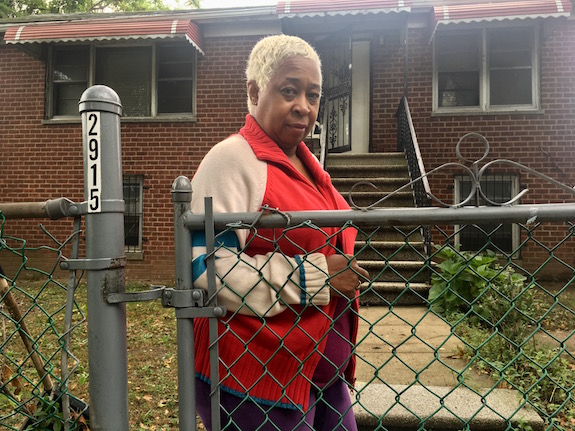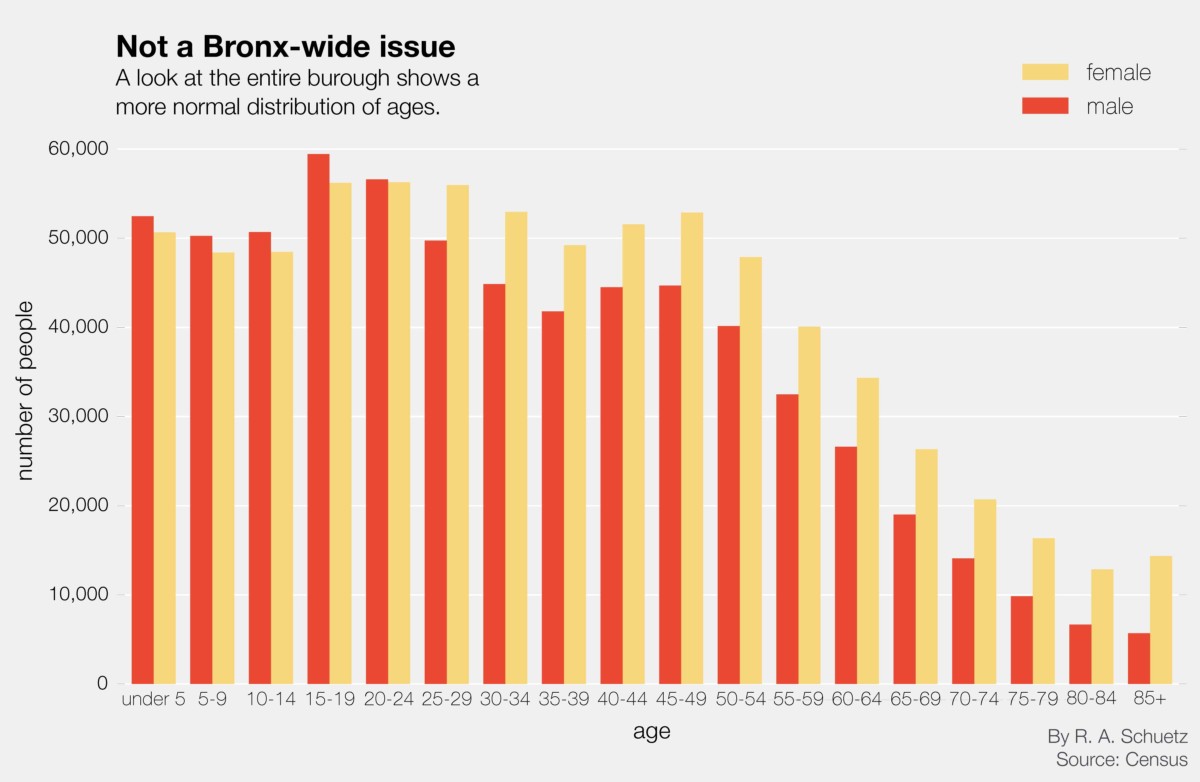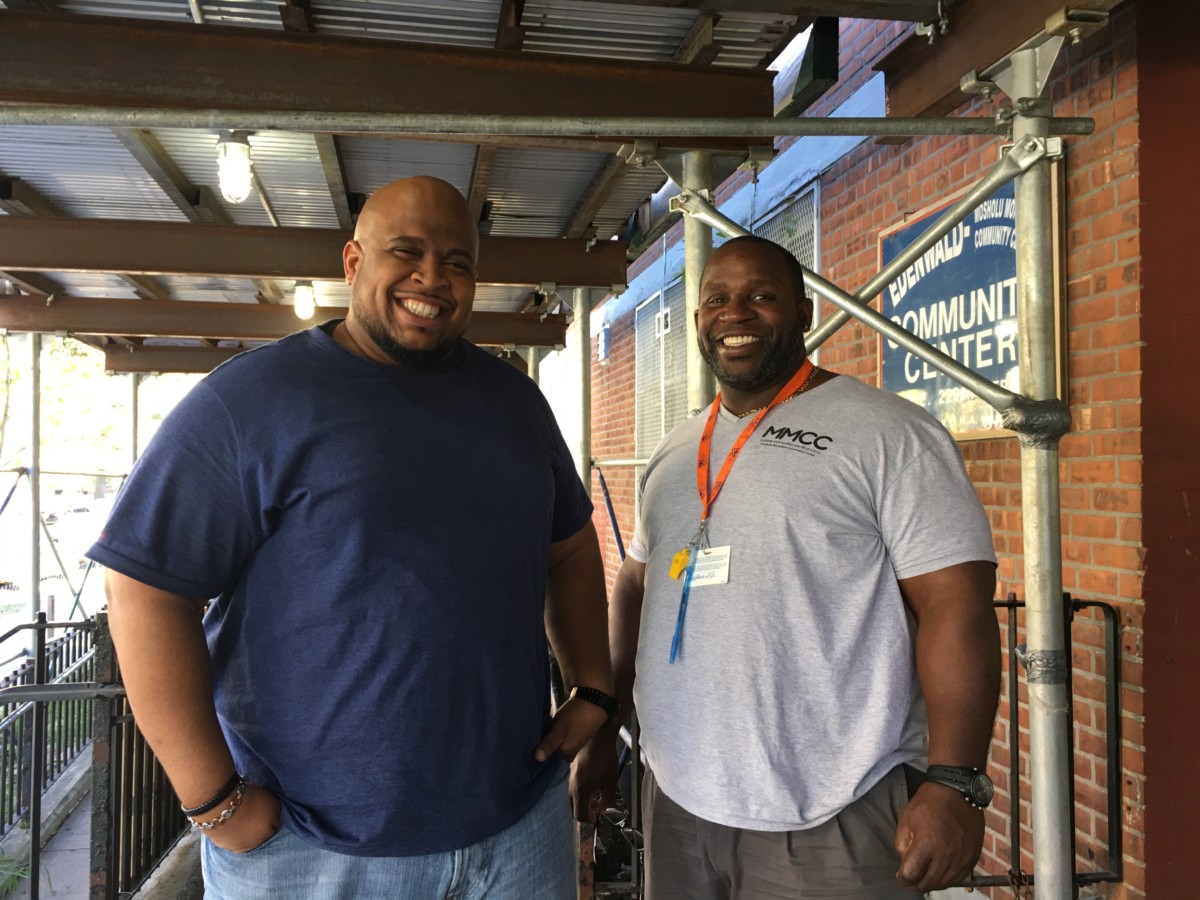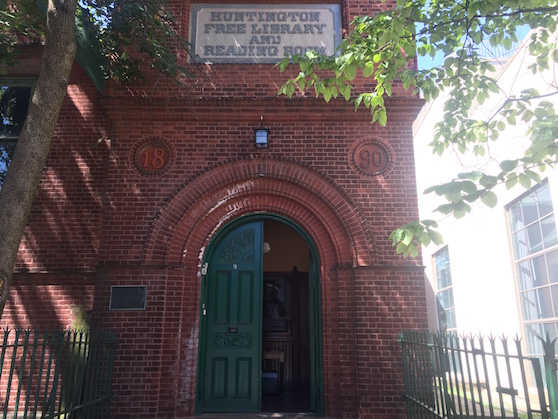
At least 40 streets around the Bronx have never been built.


Denise Martin looked out through her fence toward the paper street.

Martin stood outside her home, which she has been trying to keep clear of garbage and wildlife.

Posted on 27 October 2016.

At least 40 streets around the Bronx have never been built.


Denise Martin looked out through her fence toward the paper street.

Martin stood outside her home, which she has been trying to keep clear of garbage and wildlife.
Posted in Bronx Neighborhoods, Featured0 Comments

Posted on 27 October 2016.
At the corner of 229th and Laconia Streets in the Bronx, the police precinct office faces a cluster of buildings mostly three-stories tall known as the Edenwald Houses. The Edenwald Houses, along with the nearby Eastchester Gardens, were the target this past April of what the U.S. Attorney trumpeted as the “largest gang takedown in New York City history.” One hundred and thirteen people were indicted, mostly young men in their twenties.
Which is a worrying figure, given that the number of young men living in the area was already disproportionately low. According to Census data, for every two male teenagers in the area, there is only one man in his late thirties. The problem is a stark example of a trend taking place throughout the Bronx, where for every three male teenagers, there are two men in their late thirties.


Census data shows that between 2005 and 2010, there was a 20 percent drop in the age bracket for men living in the neighborhood.
Michael Mincey, who first moved to the Edenwald Houses when he was 4, believed that men caught between the Scylla and Charybdis of gang activity and aggressive policing are facing particular pressures to move out of the area. “Honestly, if I were to have a kid with somebody, would I want to raise him here? No,” said Mincey, 36, an administrator at the East Bronx Academy for the Future. “I don’t want to worry about getting shot. And I don’t want to worry that, because I’m hanging outside with a friend that I know, I might get caught in a big sweep because the cops think we’re selling drugs.”
As a result, Mincey has been looking at apartments in the nearby Westchester town of New Rochelle. Many of his friends have moved out of the city and out of the state.

Michael Mincey and James Wallace both grew up in the Edenwald Houses.
“I look at males across the board as an endangered species,” said Brett Scudder, founder of a mental health intervention foundation in the neighborhood. “If they are in trouble, there are no safety nets. There are no safe environments.”
“They’re incarcerated,” said Jim Orekoya, a community center director in the Williamsbridge. In 2015, over 2,900 felonies and 5,900 misdemeanors took place in the precinct, according to police data. But he pointed out other contributing factors, such as immigration patterns and the job market.
“To have made it out of here is a great thing,” said James Wallace, a school paraprofessional who left the Edenwald Houses for Co-op City when he was 33. “You lose friends at an early age: death, drugs, prison. So it’s time for us to go.”
He had fond memories of growing up in at Edenwald. “We had fun,” he reminisced. The children in the building would play whatever sport was in season—basketball in the summer, football in the fall, and a bottle-top game called skelly in between. “We were all playing in the street. That’s how it was. Compared to now, when you hardly see anybody, but you hear about it in the news,” he said, alluding to violence he attributed to both gangs and police.
But violence wasn’t the only reason Wallace moved. He also felt the need to get away to have room to grow. When he first got a job, he remembered a change in his friends attitudes toward him. “When you come back around, everybody’s face is different,” he said, blowing out a stream of breath. “Little side comments and gestures. It’s like crabs in a barrel. Just because a man has a job, he’s not part of your clique anymore. You have to watch your back and be careful because you don’t know if they’re trying to do something to you. That’s the way of life around here.”
Posted in East Bronx0 Comments

Posted on 16 October 2016.

Planned additions to the Huntington Free Library. Rendering by SLO Architecture.
Westchester Square in the East Bronx is slated to get a gleaming, glass-walled 12,000 square-foot library and an outdoor performance shell for plays and concerts. If all goes as planned, a deal between the New York Public Library and the private Huntington Free Library is allowing both to expand their services in the area.
The 125-year-old Huntington at 9 Westchester Square has agreed on selling half of its lot to the city for the construction of a new public library branch that will replace the current branch on Glebe Avenue. If approved, the library’s addition, which once housed the Museum of the American Indian, will be torn down to make way for the new branch. Construction is expected to begin in 2017 and open two to three years after.

The front door to the Huntington Free Library. Photo by Rebecca Schuetz.
Supporting the land sale, Bronx Borough President Ruben Diaz, Jr also placed emphasis on the programming the libraries offered. “The measure of a great city is its public library system,” he stated in his Land Use Review recommendation. “Together, these two library systems offer exceptional access to knowledge and programming for all out East Bronx citizens.”
The half of the Huntington Free Library that is planned to be torn down to make way for a New York Public Library branch.
Diaz’s office is allocating $1.8 million for the new public library, which will also draw $4.4 million from the mayor’s office and $12.3 million from City Council funds. The New York Public Library says it is too early to understand the number of jobs the project will create, and the city has not yet announced what will become of the current Westchester Square branch that the new building will replace.
The land is going for less than a million dollars, said the Huntington President Thomas Casey, though the New York Public Library said the deal was still being discussed. And there are already plans for that money. Plans have been drawn for a wheelchair ramp that would make the 125-year-old-building accessible. An art installation made of colored stainless steel cables suspending 3D-printed models of historical Bronx buildings would separate the ramp from the neighboring building. Behind the library, a small stage would transform the backyard into a performance space, Casey said.

Artwork lines a new wheelchair ramp in Huntington Free Library’s plan to make the facility accessible. Rendering by SLO Architecture.
These changes reflect the evolving role of libraries in the community. According to the Huntington, when it opened in 1891, it was the only library available for public use in the Bronx. But that didn’t mean it functioned like the libraries we consider public today. “When we opened up, books were so valuable, you wouldn’t check out a book and bring it home,” said Casey. In fact, its collections, which specialize in Bronx and Native American history, were so valuable that the Smithsonian attempted to take over part of its inventory in a 1989 lawsuit.
Huntington won the lawsuit, but spent a large portion of its endowment doing so, according to Casey and Cornell University. As funds subsequently ran low and the public interest in a non-circulating inventory waned, the library had to shift focus away from the collection it fought so hard to protect. The library gave stewardship of its Native American collection to Cornell University, became open only by appointment (it is now operated by volunteers), and started looking for new ways to make money and bring in people.

The portion of the Huntington Free Library that is planned to be torn down to make way for the New York Public Library. Photo by Rebecca Schuetz.
The library began pivoting its services from providing books to providing a space. It has begun showing art exhibits and opening its space to performers. Two recent productions have included a play about African American pilots and a hip hop night. And its historic facade has been an asset. Fans of the HBO drama Boardwalk Empire may recognize it—an episode from season three of the show was shot there, though HBO did not confirm the how much they paid for the location.
And Casey said the library began looking into selling the land to someone who could aid in the Huntington’s vision of becoming a community hub where people would spend their leisure hours reading, learning, and having fun. “People came out, wanted a school for teaching cooking, a charter school, a nursing home. We didn’t want any of those things,” he said. “When the public library approached us, we said, ‘What a perfect partnership.’”
Posted in Community Resources, East Bronx2 Comments
Posted on 16 September 2016.
After 24 years of inhumane conditions caused by landlord neglect, a court order will allow repairs to begin on 888 Grand Concourse, according to DNAinfo.
Posted in Newswire0 Comments
Posted on 07 September 2016.
A rezoning proposal allowing more housing along Jerome Avenue between McClellan and 184th streets is moving forward, according to News 12. The next step is an environmental review meeting on September 29.
Posted in Newswire0 Comments